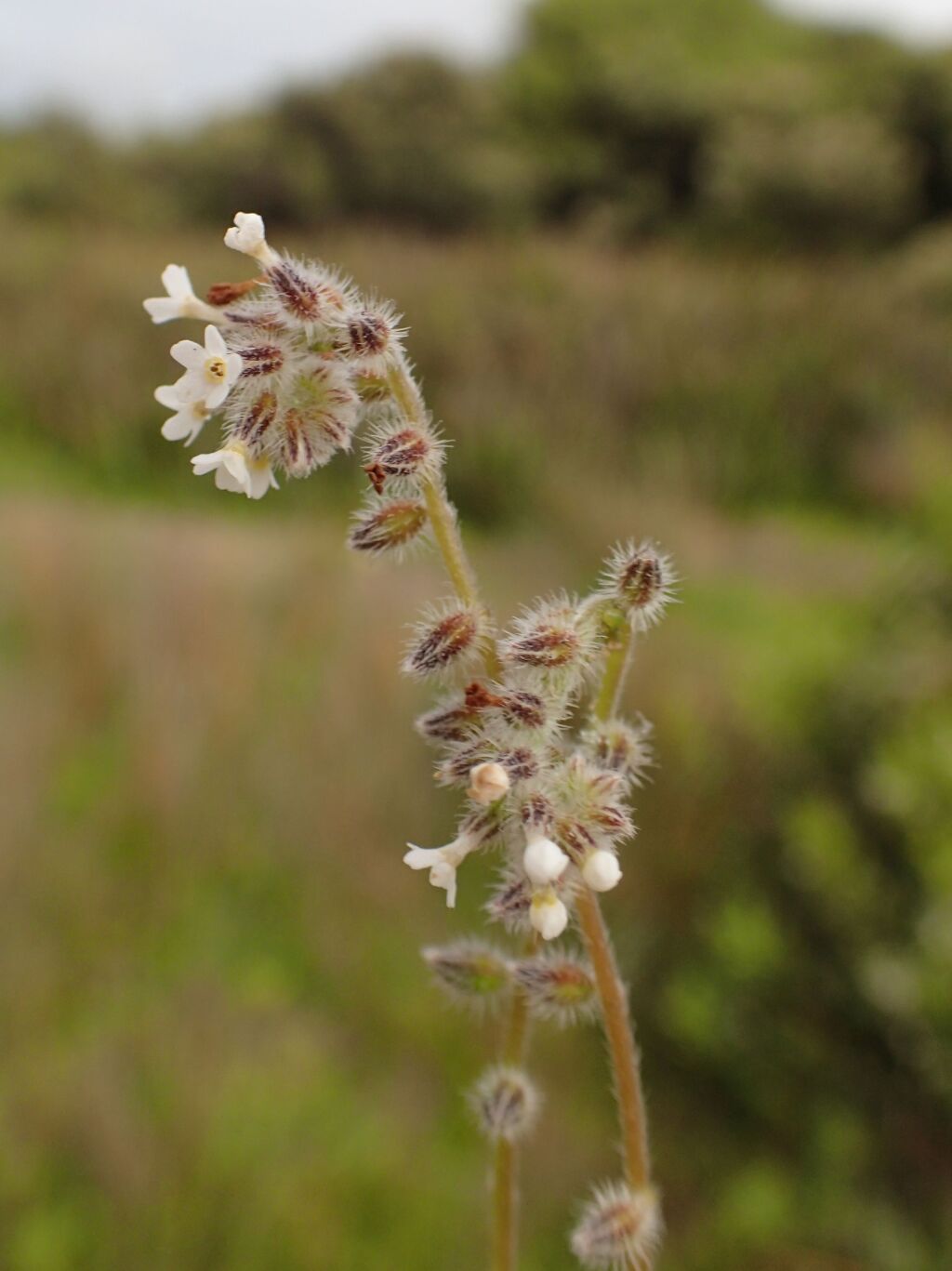Myosotis australis
R.Br. Austral Forget-me-notAnnual or perennial herb, (1–)20–40 cm high, erect or ascending; branches with dense spreading hairs. Leaves densely hairy, apex rounded, margins flat; rosette leaves oblanceolate, 3–10 cm long, 5–16 mm wide; cauline leaves lanceolate. Inflorescence axis with spreading hairs. Flowers subsessile; pedicels elongating to c. 5 mm in fruit; sepals 1–6 mm long, acute, connate in basal third or less, elongating with age, at least lower parts with dense hooked hairs, lobes triangular; corolla 2–4 mm long, exceeding the sepals, glabrous, white, cream, yellowish or blue; tube much longer than lobes; stamens and style included in corolla-tube or anthers shortly exserted; style about as long as stamens. Mericarps c. 1 mm long, dark brown. Flowers mostly Sep.–Jan.
LoM, MuM, Wim, GleP, Brid, VVP, VRiv, RobP, MuF, GipP, OtP, WaP, Gold, CVU, GGr, DunT, NIS, EGL, EGU, WPro, HSF, HNF, OtR, Strz, MonT, VAlp. Also WA, SA, NSW, ACT, Tas. New Zealand, New Guinea. Widespread from sea-level to the alps and found in a wide range of habitats.
An extremely variable species that is often difficult to identify from dried herbarium material. The short pedicels and spreading hairs on the inflorescence axis are generally the most useful distinguishing features. Plants with stems only 1–2 cm long occur on coastal dunes (e.g. near Portland and Cape Schanck). It is not clear whether they may represent a distinct entity, or may be stunted simply due to the nutrient-poor sandy soils in which they grow.
Jeanes, J.A. (1999). Boraginaceae. In: Walsh, N.G.; Entwisle, T.J., Flora of Victoria Vol. 4, Cornaceae to Asteraceae, pp. 387–411. Inkata Press, Melbourne.
 Spinning
Spinning


